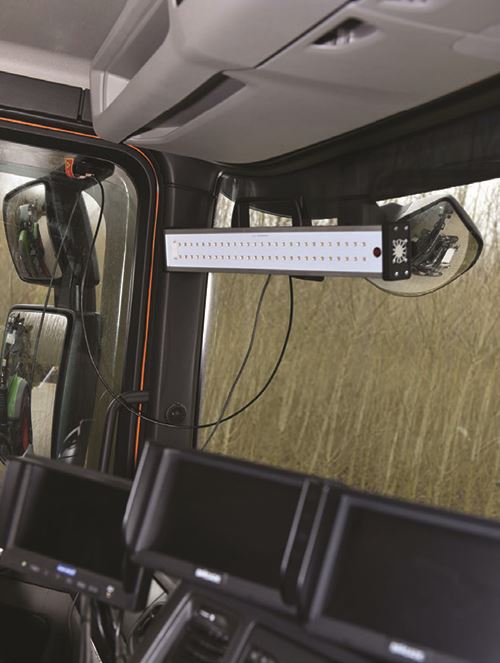Knowing that late-spring snowstorms can be among the heaviest and hardest to clear, airport operations managers in cold-weather cities like Manchester, NH, and Minneapolis implemented plans to keep their maintenance crews safe while also remaining ready to clear away snow. Thankfully, most of North America was spared significant snowfall for the remainder of the season. The challenge of keeping workers safe increased in late spring as COVID-19 cases rose, but the concern about getting socked with a major snowfall subsided.
By January 2020, health officials were aware that a deadly coronavirus could evolve into a global pandemic, but air travel wasn’t significantly affected until two months later. By the second week of April, U.S. air traffic was down nearly 60% from the same period the previous year.
Knowing that late-spring snowstorms can be among the heaviest and hardest to clear, airport operations managers in cold-weather cities like Manchester, NH, and Minneapolis implemented plans to keep their maintenance crews safe while also remaining ready to clear away snow. Thankfully, most of North America was spared significant snowfall for the remainder of the season. The challenge of keeping workers safe increased in late spring as COVID-19 cases rose, but the concern about getting socked with a major snowfall subsided.
|
facts&figures
Location: Snow Removal Team: 100 full-time workers; 40 seasonal workers Vehicles: About 300
Personnel Management: Facility Modifications: Created separate break areas for each pod, with 1 person/table New Cleaning Policy: Crews disinfect each vehicle at start & end of each shift using kits in backpacks issued by airport
Location: Manchester-Boston Snow Removal Team: 25 full-time airfield workers; 12 landside workers supplemented with seasonal workers as needed Maintenance & Emergency Response Vehicles: 60
Personnel Management: Vehicle Cleaning: Transitioned from disinfecting wipes to electrostatic sprayers to CleanRide UV-C disinfecting units |
Looking Ahead
As airport snow crews transitioned to warm-weather duties, operations managers strategized about the upcoming winter. As with the general population, some COVID risks for airport maintenance teams decreased in warmer weather when workers could remain outdoors and distance from one another. But operations managers knew that keeping their airports open when the weather turned cold again in a matter of months would require keeping their crews healthy.
Some had safety measures already in place. When COVID cases were first reported in the U.S., Mark Rudolph, planning manager of field maintenance at Minneapolis-St. Paul International Airport (MSP):
- divided his approximately 100 full-time workers and 40 seasonal workers into smaller pods;
- shifted from teams of two to one person per maintenance vehicle;
- increased from three shifts to four with fewer workers on each shift;
- staggered starting times, so shifts no longer overlapped;
- created multiple makeshift break areas in expansive vehicle bays;
- instructed workers to sit alone and to wear provided masks at all times except when eating or drinking; and
- outfitted each worker with a “to-go” kit in a backpack for mandatory vehicle cleaning before and after use and between each shift.
Similar steps were taken at other airports, including Manchester-Boston Regional (MHT) in New Hampshire. Carlton Braley, the airport’s assistant director, began last year by working through countless “what-if” scenarios. “We can’t have all of our snow fighters at home either sick or with COVID symptoms,” Braley explains.
Vital Frontliners
As much of the country and world transitioned to working from home and relied more on deliveries, the importance of air shipments quickly became obvious. Although MHT’s passenger traffic dropped by 90% last summer, cargo boomed. Braley notes that personal protective equipment for medical workers was among the goods being shipped through the northeastern airport.
“The number of flights per day hardly changed at all,” he observes. “But now you have to deal with COVID, with social distancing and with the fear that somebody brings the pandemic into your organization.”
When Braley attended the American Association of Airport Executives (AAAE) Issues Conference in January 2020, COVID-19’s impact on air travel and life in general was the hot topic. He brought back information to maintenance department leaders, and MHT immediately stocked up on extra cleaning supplies and personal protective equipment that would later become difficult for hospitals, airports and other frontline work teams to obtain. When electrostatic sprayers became a recommended way to clean the air in enclosed spaces early in the pandemic, MHT had already purchased three units and was using them to clean its fleet of about 60 field maintenance vehicles.
Braley notes that from the very onset of the coronavirus crisis, MHT leadership understood that a full-on effort was needed to keep employees and the airport itself as safe as possible. Moreover, management understood that anything less could impede the airport’s ability to survive such a drastic hit to the entire industry.
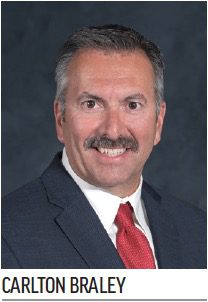 “Early on, our pandemic response was going to be as robust as our response to 9/11,” he explains. “Security was always important, but it became the first line of defense after 9/11. With COVID-19, sanitation became the new security. The level of focus and resources we put into our airports to become more secure after 9/11…we’re doing the same thing now to make our airports more sanitized.”
“Early on, our pandemic response was going to be as robust as our response to 9/11,” he explains. “Security was always important, but it became the first line of defense after 9/11. With COVID-19, sanitation became the new security. The level of focus and resources we put into our airports to become more secure after 9/11…we’re doing the same thing now to make our airports more sanitized.”
Specific efforts at MHT include upgrading the terminal’s heating, venting and air-conditioning system to make it more virus-resilient, and using new technology and new cleaning systems to disinfect bathrooms and other public spaces. Braley and the airport were also early proponents of CleanRide UV-C, a portable disinfecting system for the cabs of maintenance vehicles, which became available late last summer. (See sidebar below for more details.)
“It was clear we were going to be proactive,” says Braley. “As soon as I brought [CleanRide] to the attention of the director of our airport and suggested ordering five, he said to get 10. It’s all about knowing what a risk is and being willing to mitigate that risk.”
Communication & Coordination
At MSP, crews initially used bleach to clean vehicles between shifts, but switched to alcohol wipes when they discovered that even a diluted bleach solution was too hard on the vehicle interiors.
By the time this winter kicked in, maintenance teams had established enhanced communication and coordination strategies with airlines employees and air traffic control personnel to help determine plowing priorities.
“We do a good job preplanning and coordinating with the airlines when a snow event is forecasted,” says Rudolph. “For example, airfield maintenance personnel gather information about the number of flights expected, peak volume times, what taxi routes aircraft will use, and more. This allows us to formulate a comprehensive plowing plan before a snowflake hits the ground. During the event, our teams are fluid and work with our Airside Operations Department to address plowing requests that may have materialized. We call it ‘on-demand plowing.’ We’re not going to plow everything if there isn’t a need for it.”
Landside, MSP closed the top levels of its parking lots because the space isn’t needed while traffic is light. Crews only plow the top levels when there is a concern about weight load.
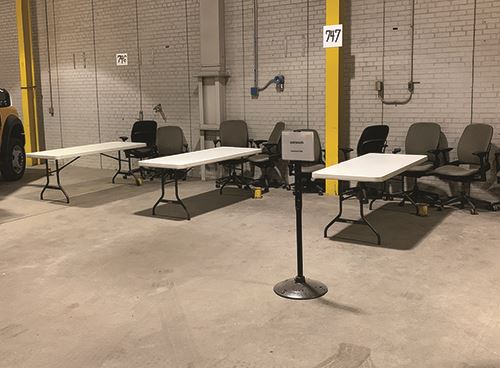
Shift beginnings and ends are now staggered to facilitate social distancing. The new strategy is particularly helpful during significant events that require a full-crew callout, because more people require more coordination. “We try to get our teams in about an hour before it starts snowing, but we don’t want all of them coming in at the same time, so we stagger the times that each pod enters the facility,” Rudolph comments.
The airport still provides catered meals to crews working long shifts during extended snow events. But instead of using self-serve buffets as in pre-pandemic times, MSP distributes individual boxed meals. Conference center staff employed by the Metropolitan Airports Commission prepare and deliver the meals, which provides cost savings to the department.
Lasting Effects
Some changes airports have made to protect workers during the coronavirus crisis will have lasting effects. For instance, upgrades to heating, venting and air-conditioning systems will continue improving air quality long after the pandemic is over. Thoroughly cleaning maintenance vehicles between shifts makes long-term sense, especially during cold and flu seasons. Rudolph and Braley both plan to make some of their recent changes permanent.
Rudolph notes that many workers at MSP have expressed gratitude for the airport’s investment in helping them stay as healthy as possible.
Braley, who serves as president of the Northeast Chapter of AAAE, fosters communication among the chapter’s 500+ members to share helpful insights on maintaining safe environments for airfield and landside maintenance workers. During the pandemic, the chapter increased its quarterly meetings to monthly virtual summits. Members listen/watch presentations from specialists, and share what’s working and what isn’t at their particular airports.
For Braley, it’s all about keeping the airport operating. Founded in 1927, MHT takes pride in having never closed due to weather. Braley has been at the airport for 27 years, and has headed winter operations for 26.
As this winter neared, Braley and other airport executives factored in pandemic-related health risks to employees when discussing flights that don’t generate significant revenue for
the airport.
“We made a promise that we were going to stay open and operational to the extent we could—to achieve an airport condition that is no worse than wet as expeditiously as possible,” he explains. “When it comes to getting this industry back on its feet, anything we’re learning at Manchester we are sharing. At the end of the day, airports are designed to stay safe and operational regardless.”
|
A New Tool To Keep Maintenance Vehicles Safe Ever since researchers found ultraviolet-C (UVC) radiation to be effective killing the coronavirus that causes COVID-19, many hospitals, hotels and other organizations have added it to their disinfecting routines.* Airlines began using UVC lamps last year to clean their airplane cabins, and several airports have invested in them for their terminals.
“We discovered there was nothing on the market incorporating UV light to clean fleets, and we knew there was a market for it,” says Ben, Team Eagle’s commercial business manager. “When we realized that airports would be open to it, we knew we were going down the right path.” In April, Team Eagle connected with Lind Equipment, a global leader in UVC-LED decontamination technology. By June, the snowplow dealer had prototypes of mobile units containing Lind light boards housed in protective casings. Engineers simply moved the on/off switch from the side of the board to a cord that’s long enough to extend outside the cab of a maintenance vehicle, added an LED timer, durable case and fans. Team Eagle calls the new disinfecting tool CleanRide UV-C and sells them for about $1,900 each. The devices plug into vehicles’ standard DC outlets for power and adhere to vehicle windows with suction cups. According to Team Eagle, one unit can completely disinfect the cab of a pickup truck or snowplow in four minutes.
The ImPakt laboratory at Western University in Ontario, Canada, tested the product and found that the system kills at least 99.9% of SARS-CoV-2, the virus that causes COVID-19. McKeown reports that the U.S. Air Force bought the first five CleanRide UVC units, and Team Eagle had sold approximately 200 by the end of last year, mostly to U.S. airports. Interest has grown as more operations managers learn about the product, he adds. The product has also attracted attention from police forces, fire departments, rental car companies and other businesses and organizations that operate fleets. Because UV light can be harmful to skin and eyes, Team Eagle stresses the importance of using CleanRide to disinfect vehicle cabs when they are empty. UV light does not escape the vehicle when the windows are up. Multiple units can be used for vehicles with large cabs. McKeown reports that some large airports have sought quotes for hundreds of CleanRide units. Manchester-Boston Regional Airport (MHT) currently owns 10 of the disinfecting devices. Assistant Director Carlton Braley says that CleanRide will be a permanent part of the airport’s safety measures even after the COVID-19 pandemic subsides. * Editor’s Note: Information available from the FDA in mid-February indicates that there is “limited published data about the wavelength, dose and duration of UVC radiation required to inactivate the SARS-CoV-2 virus.” |

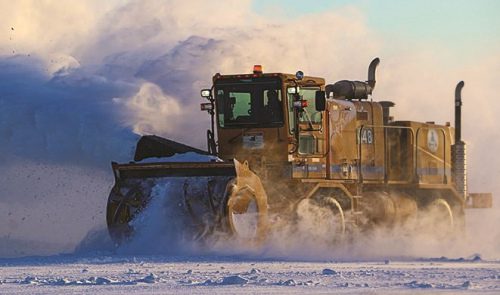
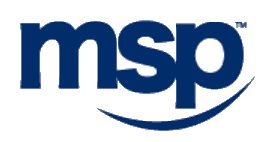 Project: COVID Measures for Winter Maintenance
Project: COVID Measures for Winter Maintenance

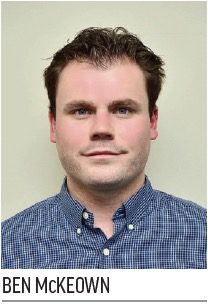 But UVC technology was initially not available in a compact unit for use in tight spaces such as vehicles. That frustrated Ben and Sam McKeown, brothers who work for Team Eagle Ltd., a Canadian-based dealer of snow removal equipment and software for airfield management and maintenance. So the McKeown boys started contacting UV companies to learn more about the technology.
But UVC technology was initially not available in a compact unit for use in tight spaces such as vehicles. That frustrated Ben and Sam McKeown, brothers who work for Team Eagle Ltd., a Canadian-based dealer of snow removal equipment and software for airfield management and maintenance. So the McKeown boys started contacting UV companies to learn more about the technology.
